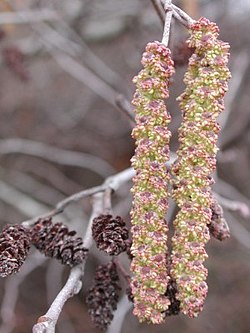Difference between revisions of "AY Honors/Flowers - Advanced/Answer Key"
| Line 29: | Line 29: | ||
===a. Name five plants that are of medicinal value and indicate what part of each plant is used.=== | ===a. Name five plants that are of medicinal value and indicate what part of each plant is used.=== | ||
===b. Name ten wild plants that are edible in root, stem, or leaf.=== | ===b. Name ten wild plants that are edible in root, stem, or leaf.=== | ||
| + | {{:Adventist Youth Honors Answer Book/Camping/Ten edible wild plants}} | ||
| + | |||
===c. An option from requirement 6 of the Flower Honor not completed for that Honor.=== | ===c. An option from requirement 6 of the Flower Honor not completed for that Honor.=== | ||
==References== | ==References== | ||
[[Category:Adventist Youth Honors Answer Book|{{SUBPAGENAME}}]] | [[Category:Adventist Youth Honors Answer Book|{{SUBPAGENAME}}]] | ||
Revision as of 14:48, 1 August 2007
1. Have the Flower Honor.
2. Photograph, collect pictures of or sketch 75 species of flowers. Make a scrapbook from these and correctly label each flower.
3. Give the distinguishing characteristics of the flowers of each of the 12 common plant families.
Adventist Youth Honors Answer Book/Flower families
4. Prove ability to use plant keys to genus and species.
5. Tell the difference between perfect and imperfect flowers. What is meant by pistillate and staminate flowers? Give an example of monoecious and dioecious plants. Tell the difference between monocotyledons and dicotyledons.
Perfect and Imperfect
The terms perfect and imperfect as pertaining to flowers relates to their sexuality. Flowers are the sexual organs of a plant, and they may contain male (stamens), female (pistils), or both parts. A plant is said to be perfect if it possesses both male and female equivalent parts. If a flower has only male, or only female structures, it is said to be imperfect.
Pistillate and Staminate
A flower is pistillate if it possesses only pistils, which are a plant's female reproductive structures. If it possesses only stamens (the male reproductive structures), it is called staminate.
Monoecious and Dioecious

and reduced, sterile stamens with no pollen
A monoecious plant is one that possesses both male and female unisexual flowers on the same plant; from Greek for "one household". Individuals bearing flowers of both sexes at the same time are called simultaneously monoecious. Individuals that bear only flowers of a single sex at one time are called consecutively monoecious. An example of a monoecious plant is the Alder (a shrub).
A dioecious plant is one in which the male and female unisexual flowers occur on different individuals; from Greek for "two households". An example of a dioecious plant is the Holly.
Monocotyledons and Dicotyledons
6. From the Bible point out two spiritual lessons in which writers used flowers for illustrations.
7. Name and describe eight poisonous plants, noting the particular part of the plant that is poisonous.
8. Do one of the following:
a. Name five plants that are of medicinal value and indicate what part of each plant is used.
b. Name ten wild plants that are edible in root, stem, or leaf.
Adventist Youth Honors Answer Book/Camping/Ten edible wild plants

